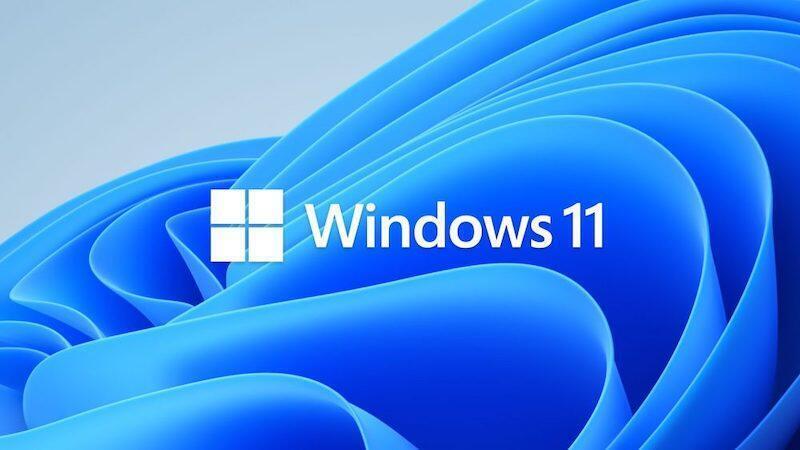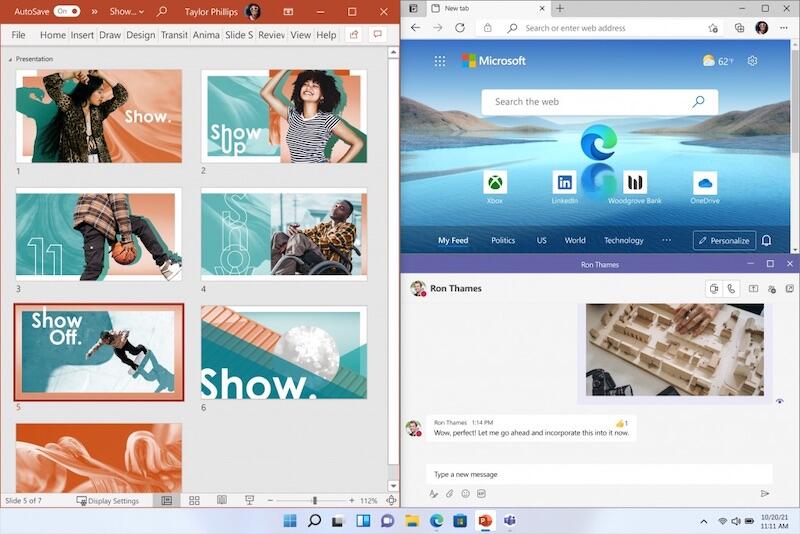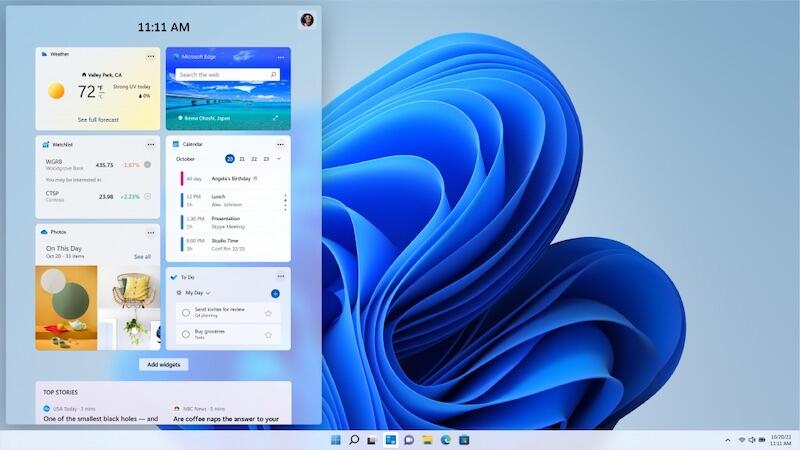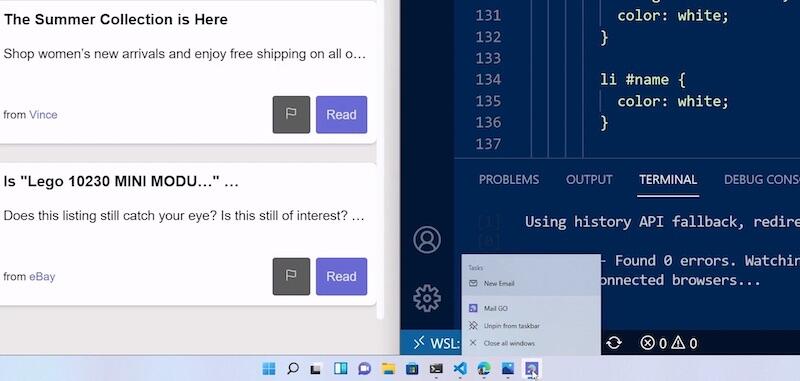This comprehensive guide offers details about Microsoft Windows 11 including features, system requirements, when you can download the new OS and more.

Microsoft Windows 11
Image: Microsoft
On June 24, 2021, Microsoft unveiled its newest operating system, Windows 11—almost six years after Windows 10 debuted. The company's latest OS will offer several updates and new features including a simpler design intended to increase productivity, ease of use and creativity; ways to connect to people faster; better PC gaming experiences; faster ways to get information you need; an all-new Microsoft Store; and a more open ecosystem unlocking new opportunities for developers and creators.
This Windows 11 cheat sheet details the operating system's main features, lists system requirements for the OS, explains how and when to get it and more. We'll update this Windows 11 guide when new information is released.
What is Windows 11?
Windows 11 is Microsoft's newest major release of its operating system and the successor to Windows 10. The OS features an all-new simplified, yet modernized, interface and was designed to inspire productivity and creativity.
SEE: All of TechRepublic's cheat sheets and smart person's guides
What are the main features of Windows 11?
The newly centered Start button uses the cloud and Microsoft 365 to show recent files, no matter what platform or device they were being viewed on previously, including an Android or iOS device.
A new set of features to Microsoft Windows 11 will be the introduction of Snap Layouts, Snap Groups and Desktops. These offer "powerful way to multitask and stay on top of what you need to get done," according to the company's press release. With these features, users can organize windows and optimize screen real estate for a cleaner visual layout. Users can also create and customize separate Desktops for each part of their life—like one for work and one for personal use.

The new Windows 11 Desktops feature.
Image: Microsoft
In Windows 11, Microsoft is also integrating Chat from Microsoft Teams into the taskbar so users can instantly connect via text, chat, voice or video with personal contacts regardless which platform or device is being used (across Microsoft Windows, Android or iOS). Through Teams, users can now also instantly mute and unmute or start a presentation directly from the taskbar in the new OS.
For gamers, Windows 11 "unlocks the full potential of your system's hardware, putting some of the latest gaming technology to work for you," according to Microsoft. Windows 11 will offer DirectX 12 Ultimate, which enables immersive graphics at high frame rates; DirectStorage for faster load times and more detailed game worlds; and Auto HDR for a wider, more vivid range of colors. Windows 11 will still support users' favorite PC gaming accessories and peripherals.
Windows 11's new Widgets are a personalized feed powered by artificial intelligence and Microsoft Edge. Instead of using a phone to check news, weather or notifications, now users can open their Windows 11 desktop to see a similarly curated view. Widgets also offers new opportunities within Windows to deliver personalized content for creators and publishers.

The new Widgets feature in Windows 11.
Image: Microsoft
The Microsoft Store is also getting a major overhaul. Now, users will have one safe location for apps and content to watch, create, play, work and learn. According to Microsoft, the Store "has been rebuilt for speed and with an all-new design that is beautiful and simple to use. Not only will we bring you more apps than ever before, we're also making all content—apps, games, shows, movies—easier to search for and discover with curated stories and collections." Soon, leading first and third-party apps such as Microsoft Teams, Visual Studio, Disney+, Adobe Creative Cloud, Zoom and Canva will be available in the Microsoft Store.
Coming in late 2021 for Windows 11: Android apps on Windows. Through its partnership with Amazon and Intel, and for the first time ever, the Microsoft Store will allow users to discover Android apps which can be downloaded via the Amazon Appstore. Microsoft is also enabling developers and independent software vendors to bring apps to the Microsoft Store, no matter what app framework is used to create them.
SEE: How to get the preview version of Windows 11 (TechRepublic)
Why does Windows 11 matter for developers?
Windows 11 features the new PWABuilder3, so developers can build a PWA from their web app in minutes. WebView2 runtime is also included with Windows 11, which makes it easier to take advantage of its web platform as a secure way to build hybrid web apps. Offerings like Windows Terminal and the new Microsoft Edge DevTools can still be used, as they are now in-box.

PWA Shortcuts integrated with Windows 11.
Image: Microsoft
The Windows App SDK, (previously known as Project Reunion), will also make it easier to integrate Windows 11 features into apps, but still allows developers to reach more than a billion users on Windows 10. The Windows App SDK 1.0 is set to be released later this year.
Developers can also build apps that run natively on Windows on ARM with the new ARM64 Emulation Compatible ABI. Using the ARM64EC, native ARM and emulated x64 code can be mixed in the same process or module. This interoperability means developers can optimize apps to run on Windows on ARM—even if the app has x64 dependencies or loads x64 plugins they don't control.
To rejuvenate app designs, developers can use WinUI3 in Windows 11, which offers built-in UI updates such as rounded geometry, refreshed iconography, new typography, fun micro-interactions (such as Lottie animation) and refreshed color palette. The Snap layouts feature will also helps with maximum productivity in Windows 11.
Reunion Windowing allows developers to easily manage and create app windows. The feature works with existing app codes, simplifies common operations and brings new functionality to desktop apps like Light-Dismiss Behavior, Picture-In-Picture mode and easier titlebar customization.
Additionally, along with major changes to the Microsoft Store, Microsoft is also taking steps to unlock greater economic opportunity for creators and developers. Microsoft plans to enable developers and independent software vendors to bring their apps regardless of whether they're built as a Win32, Progressive Web App, Universal Windows App or any other app framework. This will allow developers to reach and engage a larger audience.
The revenue share policies are also changing, according to Microsoft. App developers can now bring their own commerce into the Microsoft Store and keep 100% of the revenue—Microsoft takes nothing. Developers can still use Microsoft's commerce with competitive revenue share of 85/15.
What are the system requirements for Windows 11?
- Processor: 1 gigahertz (GHz) or faster with two or more cores on a compatible 64-bit processor or System on a Chip (SoC)
- RAM: 4 GB
- Storage: 64 GB or larger storage device
- System firmware: UEFI, Secure Boot capable
- Graphics card: Compatible with DirectX 12 or later with WDDM 2.0 driver
- Display: High definition (720p) display that is greater than 9" diagonally, 8 bits per color channel
- Internet connection: Windows 11 Home edition requires internet connectivity and a Microsoft account to complete device setup on first use. Switching a device out of Windows 11 Home in S mode also requires internet connectivity.
SEE: How to tell if your PC can run Windows 11 (TechRepublic)
What are feature-specific requirements for Windows 11?
Some features in Windows 11 have increased requirements beyond those listed above. Here are some additional details regarding requirements for key features (per Microsoft):
- 5G support: Requires 5G capable modem
- Auto HDR: Requires an HDR monitor
- BitLocker to Go: Requires a USB flash drive (available in Windows Pro and above editions).
- Client Hyper-V: Requires a processor with second level address translation (SLAT) capabilities (available in Windows Pro and above editions)
- Cortana: Requires a microphone and speaker and is currently available on Windows 11 for Australia, Brazil, Canada, China, France, Germany, India, Italy, Japan, Mexico, Spain, United Kingdom and United States
- DirectStorage: Requires an NVMe SSD to store and run games that use the "Standard NVM Express Controller" driver and a DirectX12 GPU with Shader Model 6.0 support
- DirectX 12 Ultimate: Available with supported games and graphics chips
- Presence: Requires sensor that can detect human distance from device or intent to interact with device
- Intelligent Video Conferencing: Requires video camera, microphone and speaker (audio output)
- Multiple Voice Assistant (MVA): Requires a microphone and speaker
- Snap: Three-column layouts require a screen that is 1920 effective pixels or greater in width
- Mute/Unmute from Taskbar: Requires video camera, microphone and speaker (audio output). App must be compatible with feature to enable global mute/unmute
- Spatial Sound: Requires supporting hardware and software
- Teams: Requires video camera, microphone, and speaker (audio output)
- Touch: Requires a screen or monitor that supports multi-touch
- Two-factor authentication: Requires use of PIN, biometric (fingerprint reader or illuminated infrared camera), or a phone with Wi-Fi or Bluetooth capabilities
- Voice Typing: Requires a PC with a microphone
- Wake on Voice: Requires Modern Standby power model and microphone
- Wi-Fi 6E: Requires new WLAN IHV hardware and driver and a Wi-Fi 6E capable AP/router
- Windows Hello: Requires a camera configured for near infrared (IR) imaging or fingerprint reader for biometric authentication. Devices without biometric sensors can use Windows Hello with a PIN or portable Microsoft compatible security key.
- Windows Projection: Requires a display adapter that supports Windows Display Driver Model (WDDM) 2.0 and a Wi-Fi adapter that supports Wi-Fi Direct
SEE: Windows evolves: Windows 11, and the future of Windows 10 (TechRepublic)
When will Windows 11 be released and how can I get it?
Windows 11 will be available through a free upgrade for eligible Windows 10 PCs and on new PCs beginning this holiday season and continuing into 2022, according to Microsoft. To see if your Windows 10 PC is eligible for the free upgrade to Windows 11, you can visit Windows.com to download the PC Health Check app. Microsoft said it is working with its retail partners to "make sure [the] Windows 10 PCs you buy today are ready for the upgrade to Windows 11."

Microsoft Weekly Newsletter
Be your company's Microsoft insider by reading these Windows and Office tips, tricks, and cheat sheets. Delivered Mondays and Wednesdays
Sign up todayAlso see
- Windows 11 aims to delight users but needs to establish its purpose (TechRepublic)
- Windows 10 power tips: Secret shortcuts to your favorite settings (TechRepublic Premium)
- How to become a software engineer: A cheat sheet (TechRepublic)
- Zoom vs. Microsoft Teams, Google Meet, Cisco WebEx and Skype: Choosing the right video-conferencing apps for you (free PDF) (TechRepublic)
- Windows 11: Microsoft deletes these Windows 10 features and apps (ZDNet)
- Microsoft: More must-read coverage (TechRepublic on Flipboard)

Image: Microsoft







 English (US) ·
English (US) ·